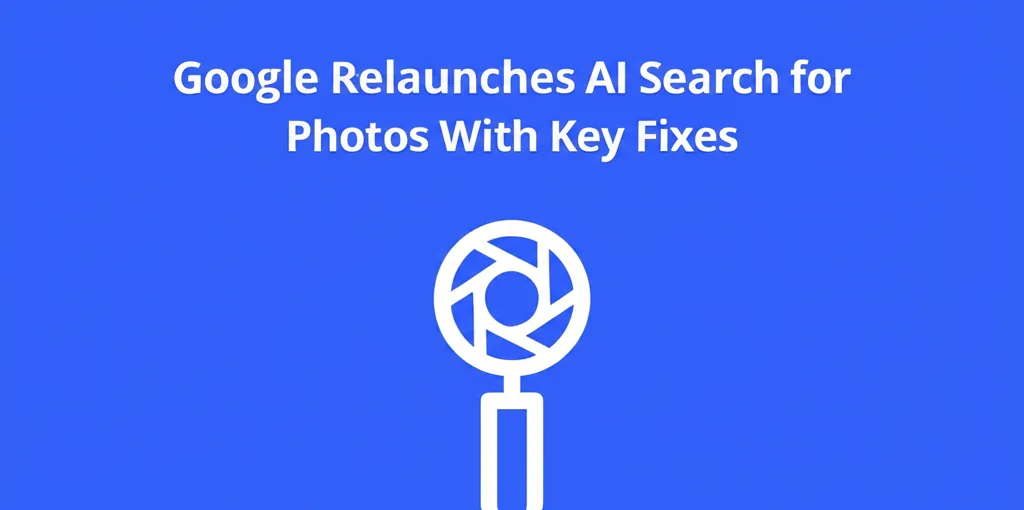Reclaiming Your Digital Privacy From AI
From bizarrely inaccurate search summaries to a flood of AI-generated images, it's clear that generative AI is no longer a niche technology. Major tech companies, including Google, LinkedIn, TikTok, and Meta (the parent company of Instagram, Facebook, and WhatsApp), are aggressively integrating AI into their platforms, often making it the default experience. They argue this will improve user experiences, but it comes at the cost of your data, which is used to train these powerful models.
These so-called 'machine-learning models' consume vast amounts of online data and user activity to generate new text, images, and videos. The results are becoming so sophisticated that it's increasingly difficult to distinguish them from human-created content. While this technology offers benefits for productivity and accessibility, it also raises significant red flags.

The AI Dilemma: Privacy vs. Personalization
Experts are sounding the alarm. Albert Bifet, director of Waikato University's AI Institute, points to major concerns around “privacy, bias, misinformation, and the concentration of power among a few large tech companies.” This sentiment is shared by some of the world's largest publishers, like the New York Times and The Guardian, who have started blocking AI web crawlers from scraping their content for AI training.
Professor Albert Bifet. Photo: Supplied / Waikato University
Tom Hovey, founder of the AI consultancy Diagram, notes that the technology is evolving at a breakneck pace. "Never before have we had such changeable (some would say 'buggy' and inconsistent) software being used at such a grand scale," he says. "The speed of change is insane."
This rapid deployment means users are often left with little control. As Hovey points out, there's a significant ethical dilemma. If a friend's phone uses AI to summarize a voicemail you left, did you consent to your voice and data being processed by an AI data center? Furthermore, he warns about a future where AI assistants may not provide neutral information but rather sponsored content, subtly influencing our decisions.
Diagram founder Tom Hovey. Photo: Supplied / Diagram
A Practical Guide to Managing AI Features
So, can you actually switch these features off? According to Consumer NZ's Nick Gelling, it's complicated. You can toggle some functions, but you often can't opt out of your data being harvested. “Consumers elsewhere in the world have better rights than we do for opting out of this kind of thing,” Gelling says, noting that many data use policies only become public because companies must inform European consumers.
Here’s a platform-by-platform breakdown of what you can—and can't—control.
Consumer NZ product test writer Nick Gelling. Photo: Supplied / Consumer NZ
AI on Social Media Feeds
While you can't block AI-generated content completely, you can try to reduce its frequency. On platforms like TikTok and Instagram, tapping ‘not interested’ on AI posts or resetting your content suggestions in the settings may help.
Meta (Facebook, Instagram, WhatsApp)
Meta has rolled out its Meta AI assistant across its platforms by default. Unfortunately, Gelling confirms there is no way to remove it. Any content you post publicly or search through the bot can be used to train its models.
What you can do:
- Set your accounts and posts to private to limit future data collection.
- For artists and creators, use tools like Glaze or Nightshade to add invisible changes to images that can confuse AI algorithms.
X (formerly Twitter)
The Grok AI chatbot, launched by Elon Musk’s X, also uses your platform activity for training by default.
What you can do:
- You can opt out. Navigate to Settings > Privacy and Safety > Grok and deselect the option under ‘Data Sharing’.
TikTok
TikTok's generative AI tool, Symphony, is primarily used for advertisers. There is currently no option to opt out of seeing this content or having your data used to train its algorithms. Hovey describes this as an "addiction flywheel" designed to recommend viral content and keep the platform engaging.
What you can do:
- The only effective measure is to make your account private to limit future data scraping.
- You can also try filtering video keywords, though some AI content may still get through.
The professional networking site, owned by Microsoft, trains its AI models on users’ public data by default.
What you can do:
- You can opt out. Go to Settings > Data Privacy and turn off the slider for ‘use my data for training content creation AI models’.
Taming AI on Your Devices and in Search
Google search results now frequently feature AI Overviews at the top.
What you can do:
- To bypass these summaries, you can use browser extensions that default to web links only, such as the one found at Ten Blue Links.
- Alternatively, add
-aito your search query. - On Android devices, the Gemini assistant may be installed by default. You can usually switch back to the traditional 'voice assistant' in your phone's settings.
Apple
Apple is making Apple Intelligence the default assistant on devices with iOS 18.3 and later. It can summarize calls, draft emails, and create images.
What you can do:
- You can disable it by going to Settings > Apple Intelligence and Siri and toggling the feature off.
- According to Gelling, Apple claims it “doesn’t use any customer interactions to train its core models.” This suggests your data is only used to personalize the model on your device, not to update Apple's global AI.


